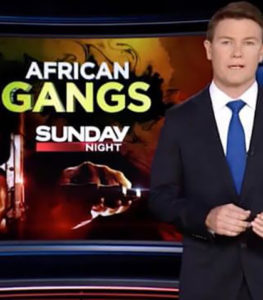Media failing CALD communities – study finds
 Australia’s newsrooms are failing minority communities and driving negative sentiment towards cultural diversity, according to a new study.
Australia’s newsrooms are failing minority communities and driving negative sentiment towards cultural diversity, according to a new study.
The Deakin University study also found that too few of the stories about minority communities incorporated a viewpoint from that community.
The report says that Australians from culturally diverse backgrounds often feel frustrated about media coverage of news events and issues that portray them in a negative light.
Titled ‘Transnational News and Multicultural Australia’, the study analysed media coverage of issues related to multicultural Australia and found that more than a third of stories reflected a negative view of minority communities.
Lead researcher Dr Usha M. Rodrigues said that traditionally, so-called ‘hard news’ stories are straight reports of events and by convention are reported in an objective and balanced manner, taking in diverse views.
“Our study analysed 1,366 media articles, examining the sentiment towards minority communities in them and we found that over a third of hard news stories contained negative sentiments towards minority communities, while more than half of the editorials and commentary pieces portrayed minority communities in a negative light,” Dr Rodrigues said.
The sample included about 80 per cent news stories, 4 per cent features and 16 per cent editorials and commentaries on selected events and issues during a six-month period.
It focused on six news topics with some level of public controversy around the issue of multicultural Australia.
These included Section 18C of the racial Discrimination Act; a discussion of Islam as a religion; US President Donald Trump’s refugee ban in January 2017; the Bourke Street attack in Melbourne’s central business district; youth gang crime, particularly in Melbourne; and the London terror attack on March 22, 2017.
The study collected articles from five mainstream online news sites: the ABC, the SBS, The Age, the Herald Sun and The Australian.
“In our analysis, we found only a quarter of the stories about minority communities incorporated another point of view in the story,” Dr Rodrigues said.
“For example, this could be a member of the relevant minority community group, a scholar who may be able to provide an alternative view or comment on the bigger picture, or a shadow minister,” she said.
“Most of the stories analysed between September 2016 and March 2017 were based either on a reporter’s observations (41 per cent) or included a government source (31 per cent). Only about 26 per cent of stories had a second source, a non-government source, an individual or expert,” Dr Rodrigues said.
“We believe newsrooms in Australia need more diversity in their workforce to provide better representation of views and perspectives in their coverage. Given that 26 per cent of Australians were born overseas and over 49 per cent have a parent born overseas, our newsrooms and the coverage of events and issues in Australia need to reflect this diversity,” she said.
“Australia’s news coverage remains largely monolithic, with events often covered according to how the white population perceives it. Similarly, culturally diverse communities see news as creating an “us” and “them” chasm in the broader community.
“The quick fix is what journalists should already be doing when covering events and issues pertaining to minority communities. They should strive to give news stories more context and balance by including a variety of views, such as non-government sources and minority voices.
“There also needs to be a concerted effort to change the makeup of Australia’s newsrooms so that the leadership and journalists reflect the cultural diversity in Australia,” Dr Rodrigues said.
Laurie Nowell
Senior Journalist












